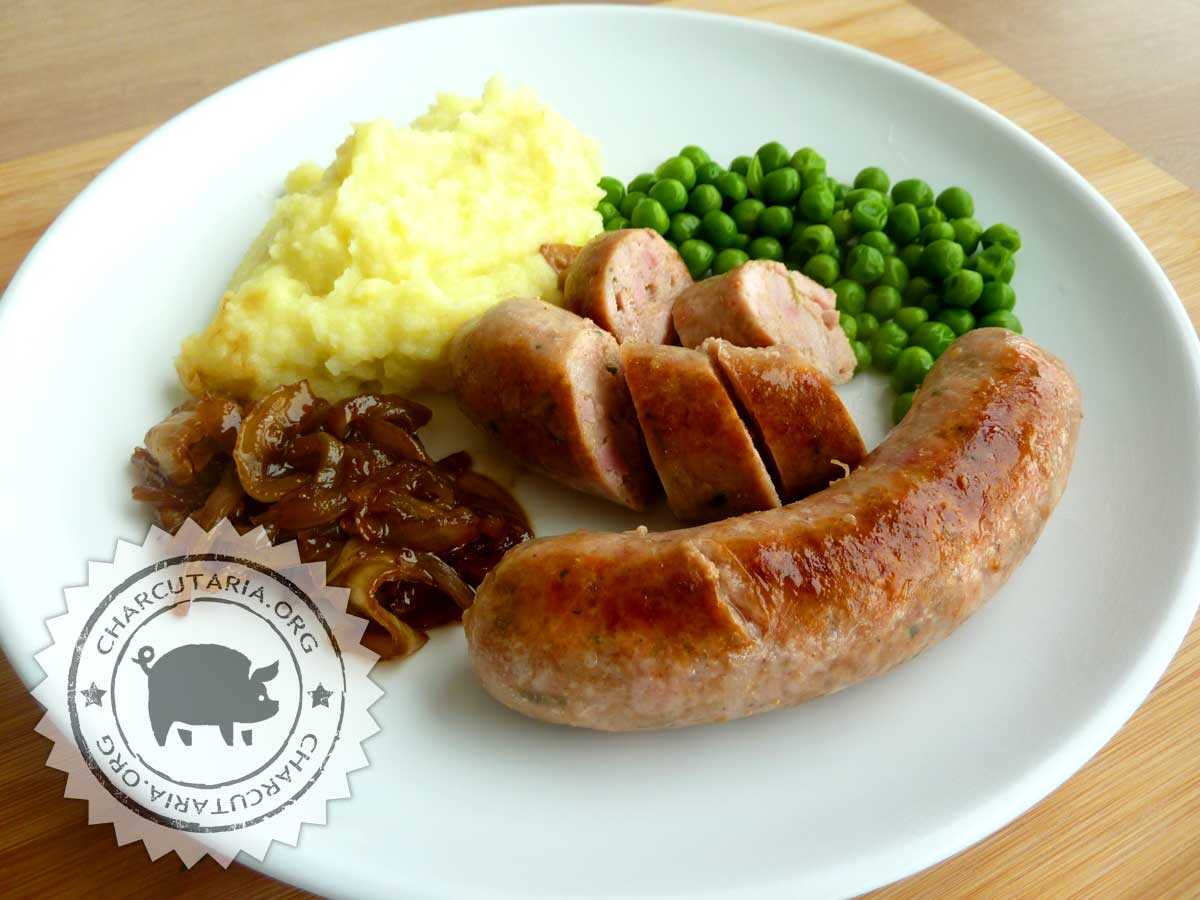
A Inglaterra e todo o Reino Unido tem grande tradição e elevado consumo de linguiças(sausages), tanto frescais quanto emulsionadas(salsichas). Consomem em todas as refeições, inclusive no café da manhã, no tradicional full English breakfast , que é mais uma refeição do que um café da manhã. O nome “bangers” surgiu por volta de 1919 na época da primeira guerra mundial, quando as linguiças eram preparadas com produtos baratos, como o pão, pois a carne era escassa.
Muito pão e líquído faziam com que as linguiças expandissem e estourassem durante a cocção na panela, por isso ficaram comumente conhecidas como “bangers”, de “bang” ou “estouro”. Atualmente as receitas com pão continuam sendo feitas como parte da tradição. Mas hoje em dia as linguiças na Inglaterra são chamadas de “bangers” apenas quando servidas no prato típico chamado “Bangers & Mash”, que é um prato de linguiça com purê de batatas.
Ingredientes da Linguiça Inglesa Beer Banger
- 800 g de pernil suíno limpo (80% do peso base);
- 200 g de gordura suína rígida (20% do peso base);
- 15 g de sal (1,5%*) ;
- 2,5 g de sal de cura 1 (0,25%*);
- 2,5g de antioxidante (0,25%*);
- 1 g de pimenta do reino branca moída (0,1%*);
- 1 g de nóz moscada (0,1%*);
- 1 g de salsa desidratada (0,1%*);
- 2 g de cebola desidratada em flocos (0,2%*);
- 2 g de alho em pó (0,2%*);
- 2 g de pimenta jamaica (0,2%*);
- 75 g de farinha de rosca;
- 200 ml de cerveja escura (Dunkel, Bock, Stout);
- Tripa natural suína (apróx. 1 metro).
(*) % quantidade calculada sobre o peso base (carne + gordura).
Preparo da linguiça Inglesa Beer Banger
- Misture todos os condimentos secos e aditivos em uma vasilha. Reserve;
- Enxague 1 metro de tripa natural suína e deixe mergulhado em um pote com água para amaciar;
- Limpe o pernil suíno e a gordura, remova o couro e outro tecido rígido;
- Corte a carne e a gordura em cubos pequenos para passar pelo moedor;
- Utilize o disco com furos de 8mm ou 10mm. Evite furos pequenos pois a carne será moída muito finamente e a textura da linguiça ficará quebradiça. Caso prefira ou não tenha moedor, corte a carne e a gordura em pedaços bem pequenos com uma faca bem afiada;
- Misture a carne moída/cortada com os condimentos. Misture até distribuir uniformemente;
- Acrescente aos poucos a cerveja, misture e continue acrescentando até obter uma textura pegajosa mas não muito mole. Neste receitra foram suficientes 200ml da cerveja, mas pode variar de acordo com a capacidade de absorção da farinha e da carne;
- Embutir na tripa suína;
- Torcer ou amarrar em gomos do tamanho desejado;
- Finalize na frigideira, churrasqueira ou forno. Em fogo baixo elas não estouram. Não há problemas em estourar, é uma opção, então caso queira que estourem(bang) utilize temperatura mais alta. A pressão do vapor vai estourar a tripa e abrir a linguiça.
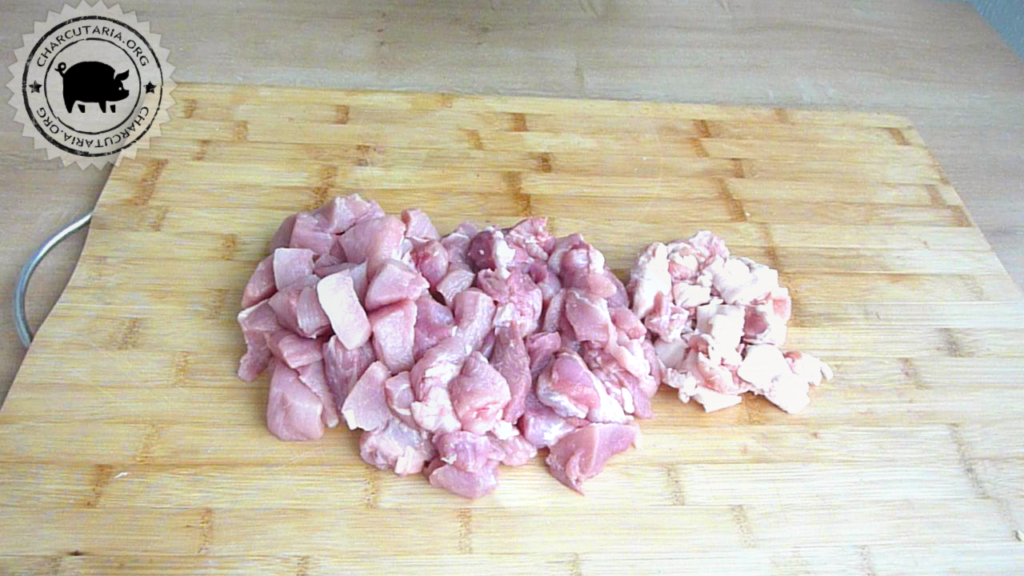

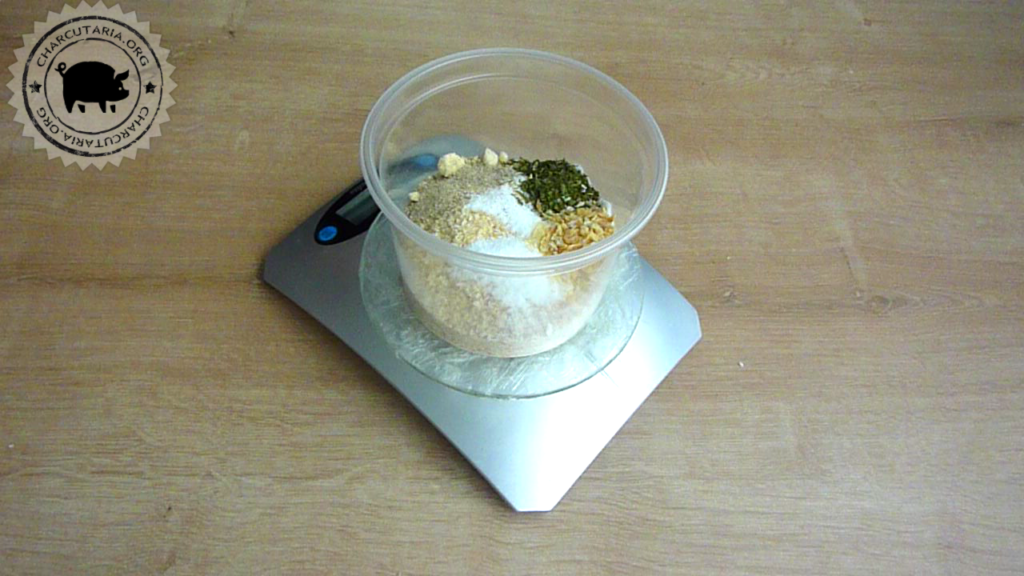
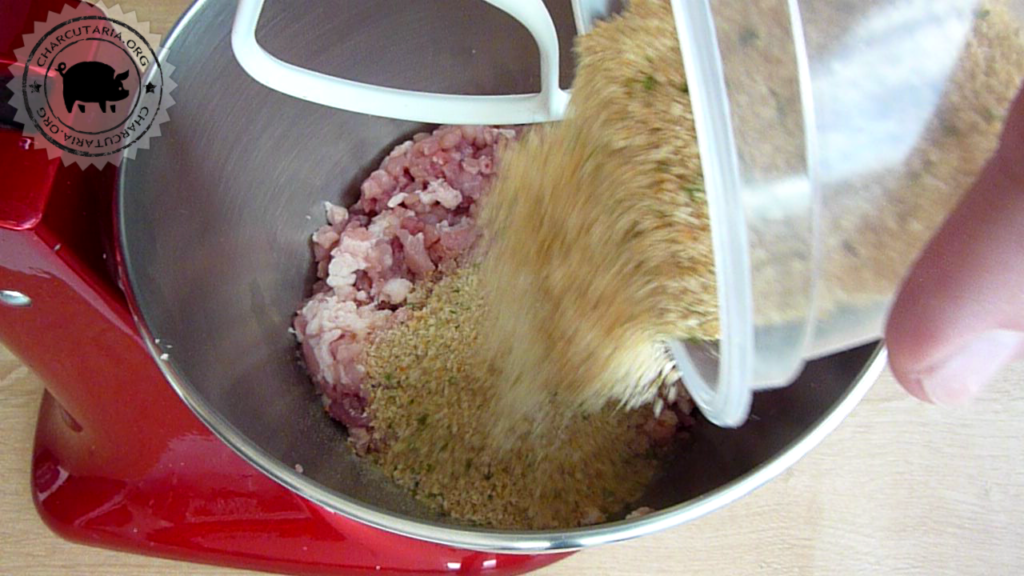

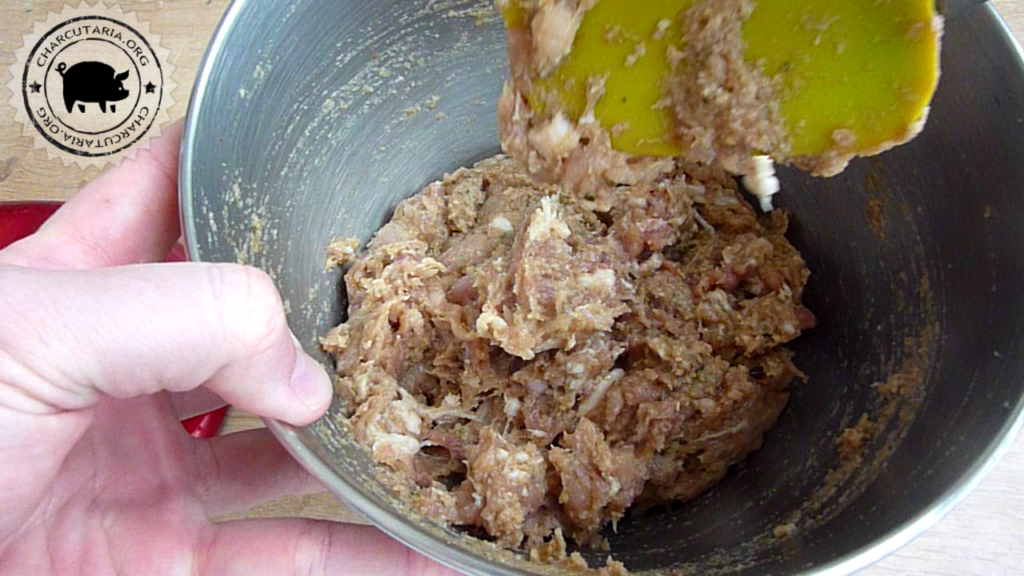
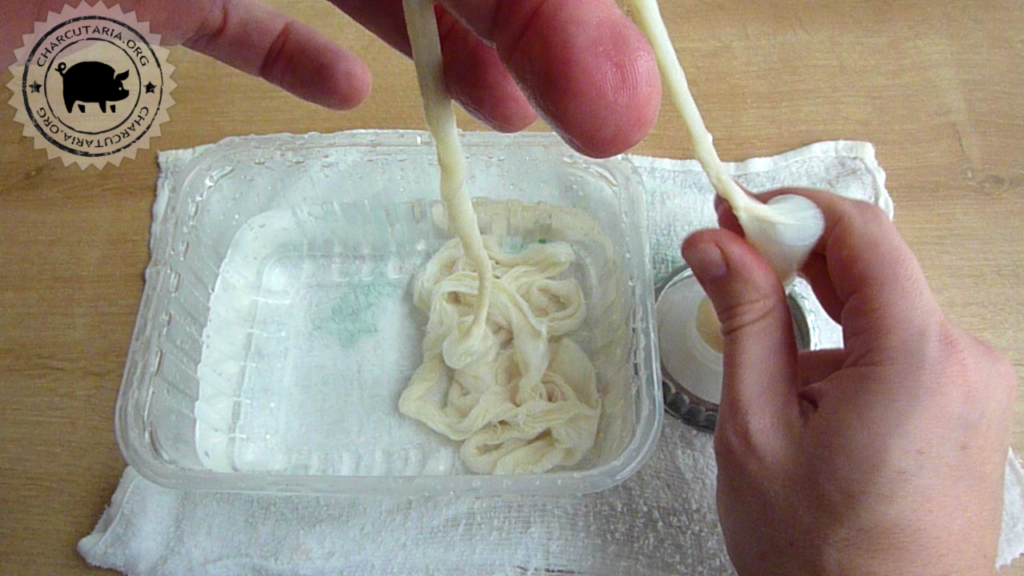

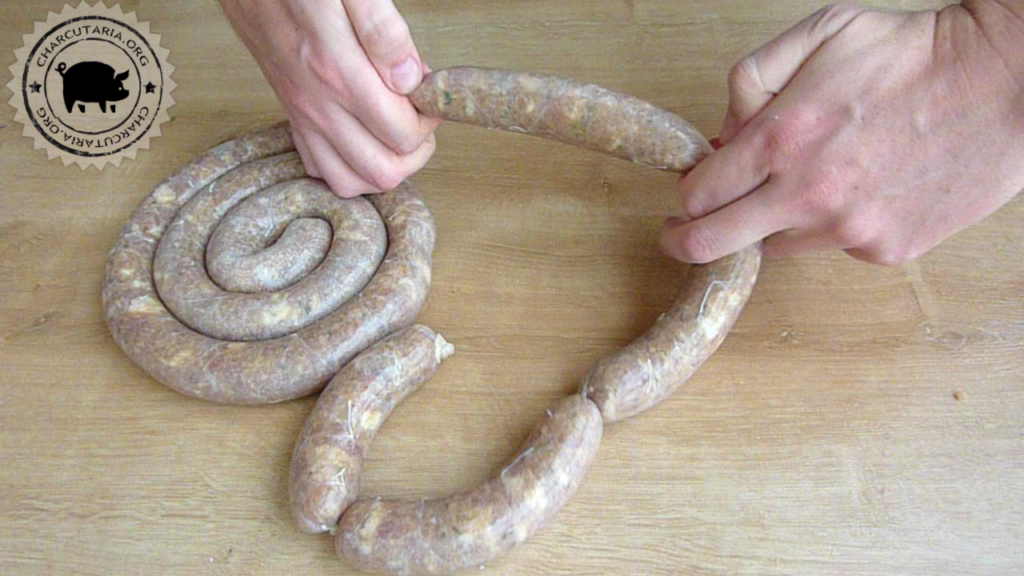

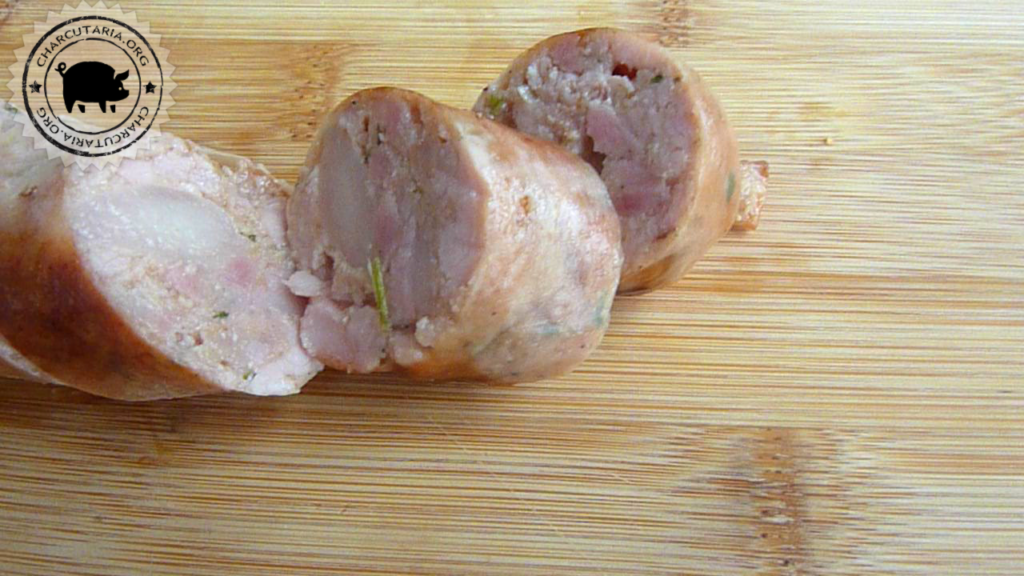
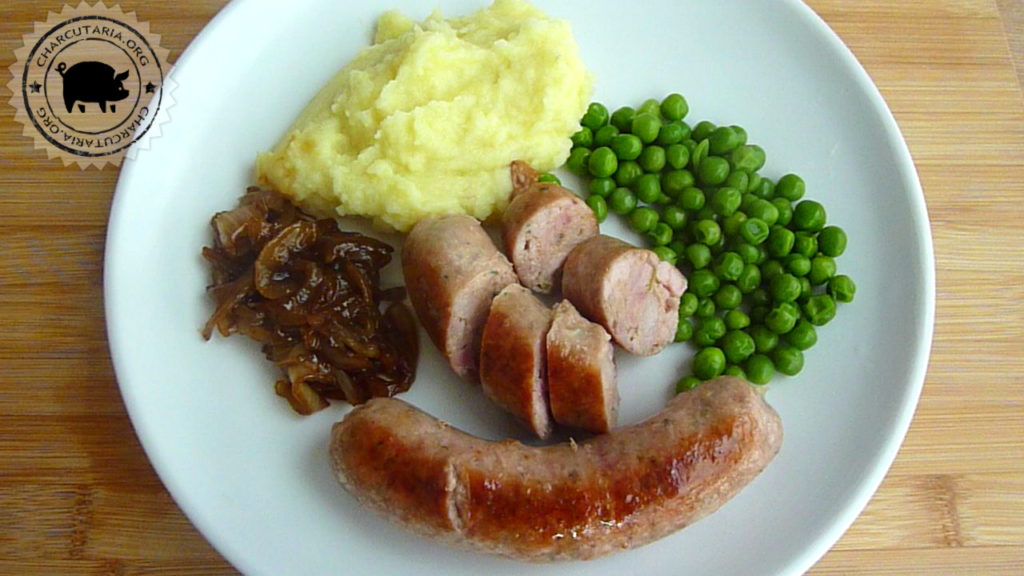
Resultado da linguiça inglesa Beer Banger
É uma linguiça bastante saborosa. A farinha de rosca absorve a cerveja e não deixa escorrer durante a cocção, desta forma é possível sentir o gosto da cerveja. Sem a farinha a cerveja toda escorreria durante a cocção e não teria o mesmo resultado. Apesar deste tipo de linguiça ter sido desenvolvido para suprir a falta de carne em épocas de guerra, a farinha é uma ótima maneira para agregar e estabilizar o sabor oriundo de líquidos que dificilmente seriam incorporados em grandes quantidades apenas pela proteína animal.
É uma receita simples e barata que vale a pena ser feita!
Para uma refeição típica inglesa monte o prato “Bandergs & Mash”, que é a linguiça acompanhada de purê de batatas.
Validade e conservação
Validade baseada em produtos industrializados similares.
Refrigerada: 5 dias em temperatura de até 4ºC
Congelada: 120 dias em temperatura de -12°C ou mais frio
Referência para a receita: https://www.englishbreakfastsociety.com/bangers-sausage-recipe.html
-
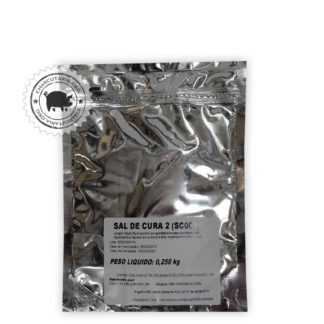 Sal de cura 2R$ 8,00
Sal de cura 2R$ 8,00 -
 Sal de cura 1R$ 8,00
Sal de cura 1R$ 8,00 -
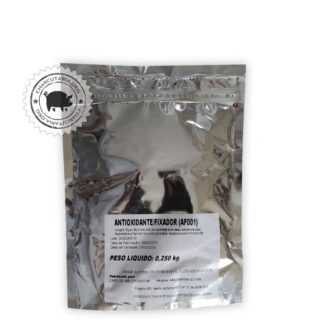 Antioxidante FixadorR$ 23,00
Antioxidante FixadorR$ 23,00 -
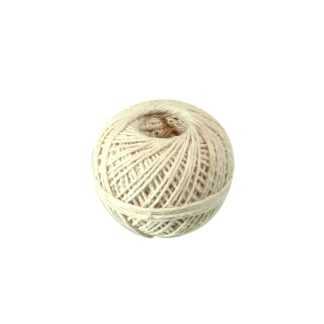 Barbante culinárioR$ 7,90
Barbante culinárioR$ 7,90 -
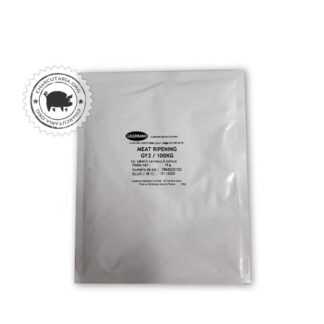 Cultura StarterO preço original era: R$ 69,90.R$ 59,90O preço atual é: R$ 59,90.
Cultura StarterO preço original era: R$ 69,90.R$ 59,90O preço atual é: R$ 59,90. -
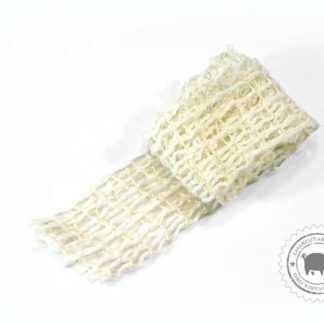 Rede elástica culinária 50mmR$ 15,00
Rede elástica culinária 50mmR$ 15,00 -
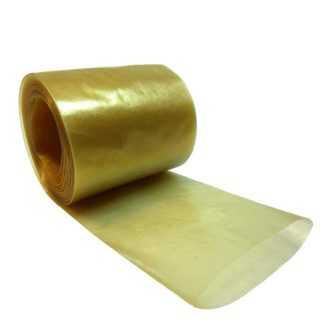 Tripa de colágeno 45mm rolo 5 metros salameR$ 25,00
Tripa de colágeno 45mm rolo 5 metros salameR$ 25,00 -
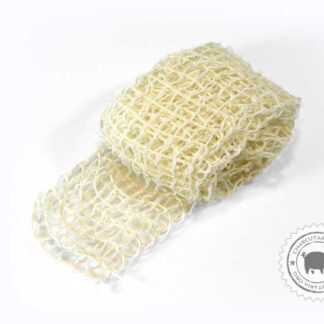 Rede elástica culinária 65mmR$ 18,00
Rede elástica culinária 65mmR$ 18,00 -
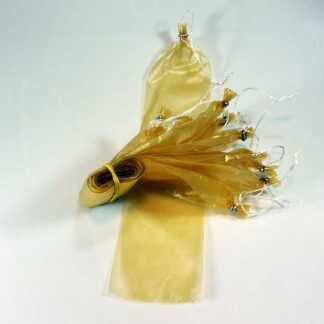 Tripa de colágeno salame 45mm 10 unidades amarradasR$ 22,00
Tripa de colágeno salame 45mm 10 unidades amarradasR$ 22,00 -
 Tripa de colágeno 80mm copa e salameR$ 29,90
Tripa de colágeno 80mm copa e salameR$ 29,90 -
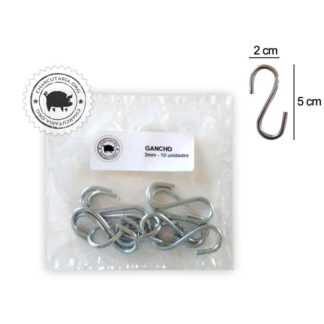 Gancho GalvanizadoR$ 12,00
Gancho GalvanizadoR$ 12,00 -
 Tripa de colágeno salame 50mm 10 unidades amarradasR$ 24,00
Tripa de colágeno salame 50mm 10 unidades amarradasR$ 24,00


GOSTEI DA EXPLICAÇAO…MAS ONDE EU COMPRO?
Olá, tô iniciando agora no mundo das linguiças e me surgiu uma pequena dúvida. Deixo a massa dessa descansando por 24 horas tbem? Sempre que usar o sal de cura deve haver esse descanso? Se eu usar o emulsificante, não preciso colocar a farinha de rosca? Muito obrigada!
Oi Tamara, deixe descansando ao menos 12 horas após ensacada a linguiça. Esse tempo garante a ação do sal de cura. A farinha de rosca é uma característica desta linguiça então não use o emulsificante, apenas a farinha de rosca.
Maravilha, Eduardo! Muito obrigada pelo auxílio. E surgindo novas dúvidas eu volto aqui! 😉